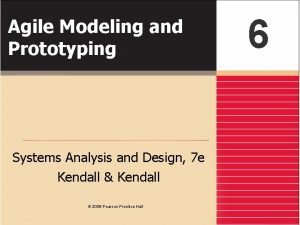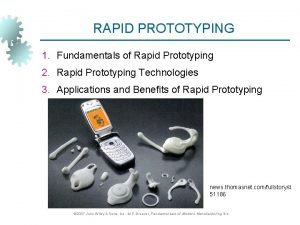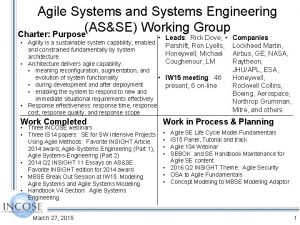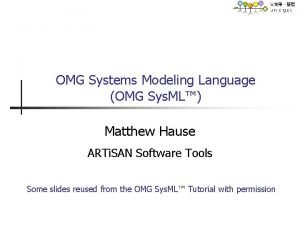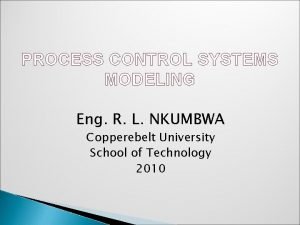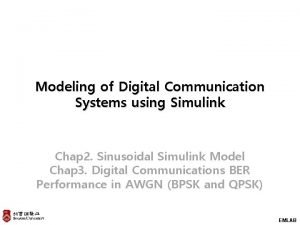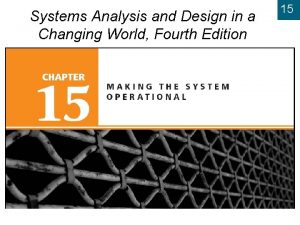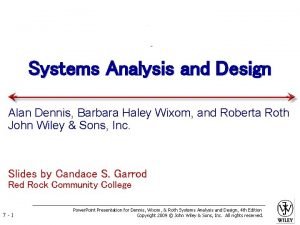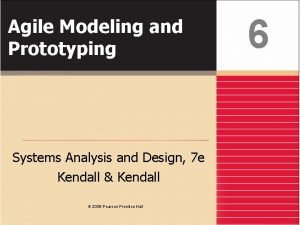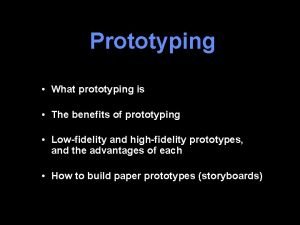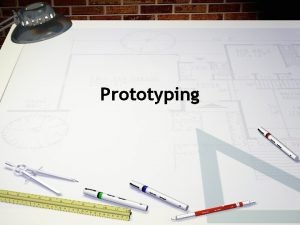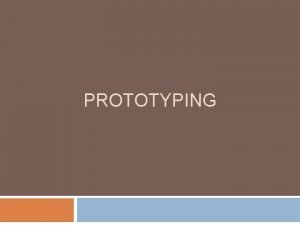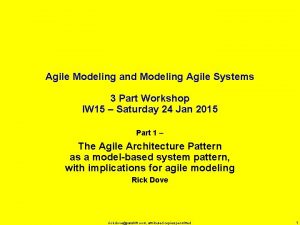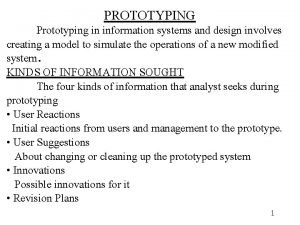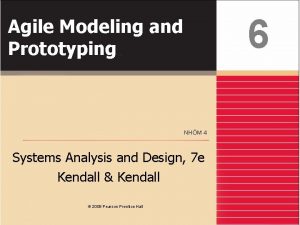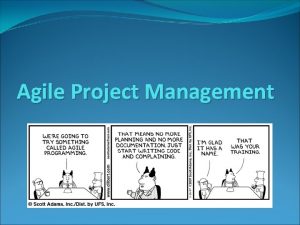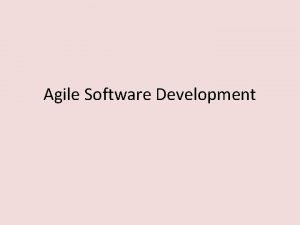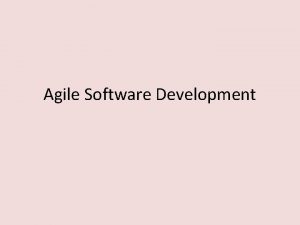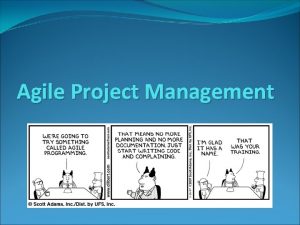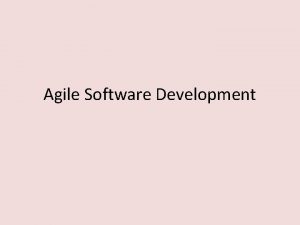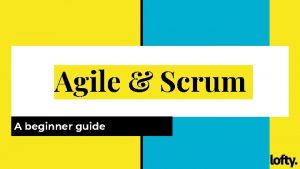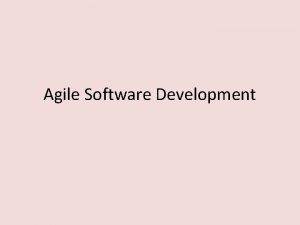Agile Modeling and Prototyping Systems Analysis and Design











































- Slides: 43

Agile Modeling and Prototyping Systems Analysis and Design, 7 e Kendall & Kendall © 2008 Pearson Prentice Hall 6

Learning Objectives • • • Understand the roots of agile modeling in prototyping and the four main types of prototyping Be able to use prototyping for human information requirements gathering Understand the concept of RAD for use in human information requirements gathering and interface design Understand agile modeling and the core practices that differentiate it from other development methodologies Learn the importance of values critical to agile modeling Understand how to improve efficiency for users who are knowledge workers using either structured methods or agile modeling Kendall & Kendall 2

Agile Modeling, but First Prototyping • Agile modeling is a collection of innovative, user-centered approaches to systems development • Prototyping is an information-gathering technique useful in seeking user reactions, suggestions, innovations, and revision plans Kendall & Kendall 3

Major Topics • Prototyping • Rapid application development (RAD) • Agile Modeling Kendall & Kendall 4

Prototyping • Patched-up • Nonoperational • First-of-a-series • Selected features Kendall & Kendall 5

Patched-Up Prototype • A system that works but is patched up or patched together • A working model that has all the features but is inefficient • Users can interact with the system • Retrieval and storage of information may be inefficient Kendall & Kendall 6

Nonoperational Scale Models • • A nonworking scale mode that is set up to test certain aspects of the design A nonworking scale model of an information system might be produced when the coding required by the application is too expensive to prototype but when a useful idea of the system can be gained through prototyping of the input and output only Kendall & Kendall 7

First-of-a-Series Prototype • • Creating a pilot Prototype is completely operational Useful when many installations of the same information system are planned A full-scale prototype is installed in one or two locations first, and if successful, duplicates are installed at all locations based on customer usage patterns and other key factors Kendall & Kendall 8

Selected Features Prototype • Building an operational model that includes some, but not all, of the features that the final system will have • Some, but not all, essential features are included • Built in modules • Part of the actual system Kendall & Kendall 9

Figure 6. 1 Four kinds of prototypes (clockwise, starting from the upper left) Kendall & Kendall 10

Prototyping as an Alternative to the Systems Life Cycle • Two main problems with the SDLC • Extended time required to go through the development life cycle • User requirements change over time • Rather than using prototyping to replace the SDLC use prototyping as a part of the SDLC Kendall & Kendall 11

Guidelines for Developing a Prototype • Work in manageable modules • Build the prototype rapidly • Modify the prototype in successive iterations • Stress the user interface Kendall & Kendall 12

Disadvantages of Prototyping • It can be difficult to manage prototyping as a project in the larger systems effort • Users and analysts may adopt a prototype as a completed system Kendall & Kendall 13

Advantages of Prototyping • Potential for changing the system early in its development • Opportunity to stop development on a system that is not working • Possibility of developing a system that more closely addresses users’ needs and expectations Kendall & Kendall 14

Users’ Role in Prototyping • Honest involvement • Experimenting with the prototype • Giving open reactions to the prototype • Suggesting additions to or deletions from the prototype Kendall & Kendall 15

Wed 18 -11 RAD (Rapid Application Development) • An object-oriented approach to systems development that includes a method of development as well as software tools Kendall & Kendall 16

RAD Phases • Requirements planning • RAD design workshop • Implementation Kendall & Kendall 17

Figure 6. 4 The RAD design workshop is the heart of the interactive development process Kendall & Kendall 18

Requirements Planning Phase • Users and analysts meet to identify objectives of the application or system • Orientation is toward solving business problems Kendall & Kendall 19

RAD Design Workshop • • Design and refine phase (workshop) Use group decision support systems room if available Users respond to actual working prototypes Analysts refine designed modules based on user responses Kendall & Kendall 20

Implementation Phase • As the systems are built and refined, the new systems or part of systems are tested and then introduced to the organization • When creating new systems, there is no need to run old systems in parallel Kendall & Kendall 21

Martin’s Pioneering Approaches to RAD • Requirements planning • User design (nontechnical design aspects) • Construction • Cutover Kendall & Kendall 22

Figure 6. 5 Martin’s phases of RAD Kendall & Kendall 23

Software Tools for RAD • Microsoft Access, Microsoft Visual Basic, Visual C++, and Microsoft. NET • Differ from one another in their: • Capabilities to support client/server applications • Ease of use and the amount of programming skill that is required Kendall & Kendall 24

Comparing RAD to the SDLC • RAD software tools are used to generate screens and exhibit the overall flow of the running of the application • RAD users are signing off on a visual model representation • RAD implementation is less stressful because users have helped to design the business aspects of the system Kendall & Kendall 25

Figure 6. 6 The RAD design workshop and the SDLC approach compared Kendall & Kendall 26

When to Use RAD • The team includes programmers and analysts who are experienced with it • There are pressing reasons for speeding up application development • The project involves a novel ecommerce application and needs quick results • Users are sophisticated and highly engaged with the goals of the company Kendall & Kendall 27

Disadvantages of RAD • Trying to hurry the project too much • Lack of documentation Kendall & Kendall 28

Sun 22 -11 Agile Modeling • Agile methods are a collection of innovative, user-centered approaches to systems development • Tries to define an overall system plan quickly, develop and release software quickly, and then continuously revise the software to additional features Kendall & Kendall 29

Values and Principles of Agile Modeling • Communication Users may critique, and sometimes complain • Simplicity • Feedback • Courage Kendall & Kendall 30

Figure 6. 7 Values are crucial to the agile approach Kendall & Kendall 31

The Basic Principles of Agile Modeling • • • Providing rapid feedback Assuming simplicity over 90 percent of problems can be solved with utter simplicity Changing incrementally making the smallest change possible that still results in a difference Embracing change be able to simultaneously solve whatever presents the biggest obstacle Encouraging quality work all participants want to do quality work Kendall & Kendall 32

Figure 6. 8 Five Agile Principles guide the systems analyst through a successful project Kendall & Kendall 33

Activities, Resources, and Practices of Agile Modeling • Coding - the most valuable thing that we receive from code is “learning. ” • Testing - the agile approach views automated tests as critical. • Listening - in the agile approach, listening is done in the extreme. • Designing - a way of creating a structure to organize all of the logic in the system. Kendall & Kendall 34

Four Resource Control Variables of Agile Modeling • Time • Cost • Quality • Scope There is a state of balance between the resources and the activities needed to complete the project Kendall & Kendall 35

Four Core Agile Practices • Short releases the development team compresses the time between releases of their product • 40 -hour work week works intensely together during a typical 40 -hour work week • Onsite customer a user who is an expert in the business aspect of the systems development work • Pair programming you work with another programmer of your own choosing Kendall & Kendall 36

The Agile Development Process • Exploration • Planning • Iterations to the first release • Productionizing • Maintenance Kendall & Kendall 37

Wed 23 -11 Writing User Stories • Spoken interaction between developers and users • Seeking first and foremost to identify valuable business user requirements • The goal is prevention of misunderstandings or misinterpretations of user requirements Kendall & Kendall 38

Figure 6. 10 User stories can be recorded on cards. The user story should be brief enough for an analyst to determine what systems features are needed Kendall & Kendall 39

Lessons Learned from Agile Modeling • Short releases allow the system to evolve • Pair programming enhances overall quality • Onsite customers are mutually beneficial to the business and the agile development team Kendall & Kendall 40

Lessons Learned from Agile Modeling (Continued) • The 40 -hour work week improves worker effectiveness • Balanced resources and activities support project goals • Agile values are crucial to success communication, simplicity, feedback, and courage Kendall & Kendall 41

Scrum • Scrum is an Agile approach that has an emphasis on teamwork. • Team success is of primary importance. • Individual success is secondary. • The team works within a strict time frame. • The project leader has some but not much influence on detail. Kendall & Kendall 42

Figure 6. 13 Adopting new information systems involves balancing several risks Kendall & Kendall 43
 Rad design workshop
Rad design workshop Agile modeling and prototyping
Agile modeling and prototyping Patched up prototype
Patched up prototype Manufacturing systems modeling and analysis
Manufacturing systems modeling and analysis Helen c. erickson
Helen c. erickson Dimensional modeling vs relational modeling
Dimensional modeling vs relational modeling What is process modeling in system analysis and design
What is process modeling in system analysis and design Requirements modeling in system analysis and design
Requirements modeling in system analysis and design Liquid based rp system
Liquid based rp system Design prototyping and construction
Design prototyping and construction System analysis and design kendall
System analysis and design kendall Agile embedded software development
Agile embedded software development Agile systems engineering
Agile systems engineering Omg systems modeling language
Omg systems modeling language Modeling mechanical systems examples
Modeling mechanical systems examples Control systems modeling
Control systems modeling Modeling of digital communication systems using simulink
Modeling of digital communication systems using simulink Modeling of digital communication systems using simulink
Modeling of digital communication systems using simulink Systems analysis and design in an age of options pdf
Systems analysis and design in an age of options pdf Gantt chart in system analysis and design
Gantt chart in system analysis and design Systems analysis and design in a changing world
Systems analysis and design in a changing world Systems analysis and design in a changing world
Systems analysis and design in a changing world Systems analysis and design dennis
Systems analysis and design dennis Introduction to systems analysis and design
Introduction to systems analysis and design Structured system analysis and design method
Structured system analysis and design method A modern approach to systems analysis and design
A modern approach to systems analysis and design Modern systems analysis and design
Modern systems analysis and design Kendall and kendall system analysis and design
Kendall and kendall system analysis and design System analysis and design dennis
System analysis and design dennis Systems analysis and design alan dennis
Systems analysis and design alan dennis Systems analysis and design alan dennis
Systems analysis and design alan dennis Systems analysis and design alan dennis
Systems analysis and design alan dennis Systems analysis and design alan dennis
Systems analysis and design alan dennis Systems analysis and design alan dennis
Systems analysis and design alan dennis Systems analysis and design alan dennis
Systems analysis and design alan dennis Ssadm data flow diagram
Ssadm data flow diagram Radar systems analysis and design using matlab
Radar systems analysis and design using matlab Object-oriented systems analysis and design using uml
Object-oriented systems analysis and design using uml A modern approach to systems analysis and design
A modern approach to systems analysis and design System analysis and design kendall
System analysis and design kendall System analysis and design in a changing world
System analysis and design in a changing world Systems analysis and design in a changing world
Systems analysis and design in a changing world Systems analysis and design in a changing world
Systems analysis and design in a changing world Systems analysis and design alan dennis
Systems analysis and design alan dennis
